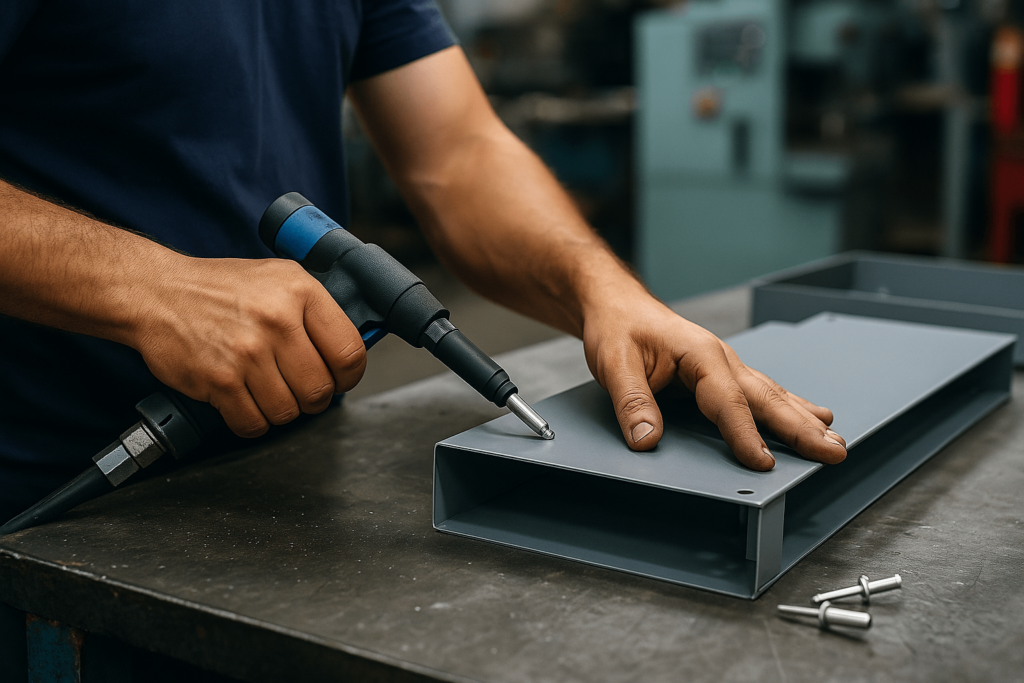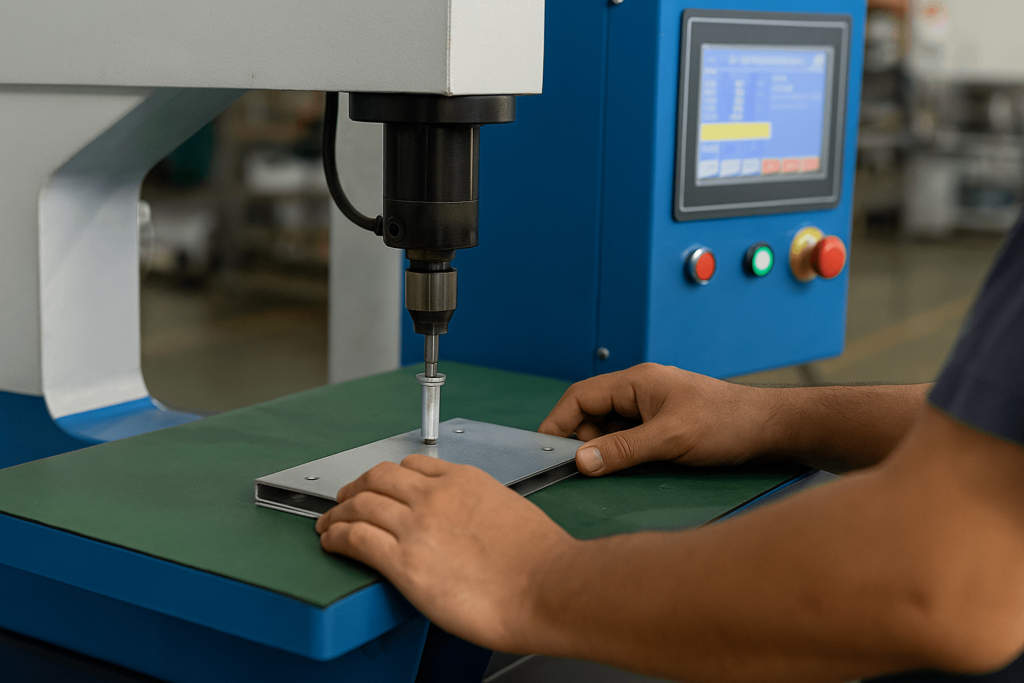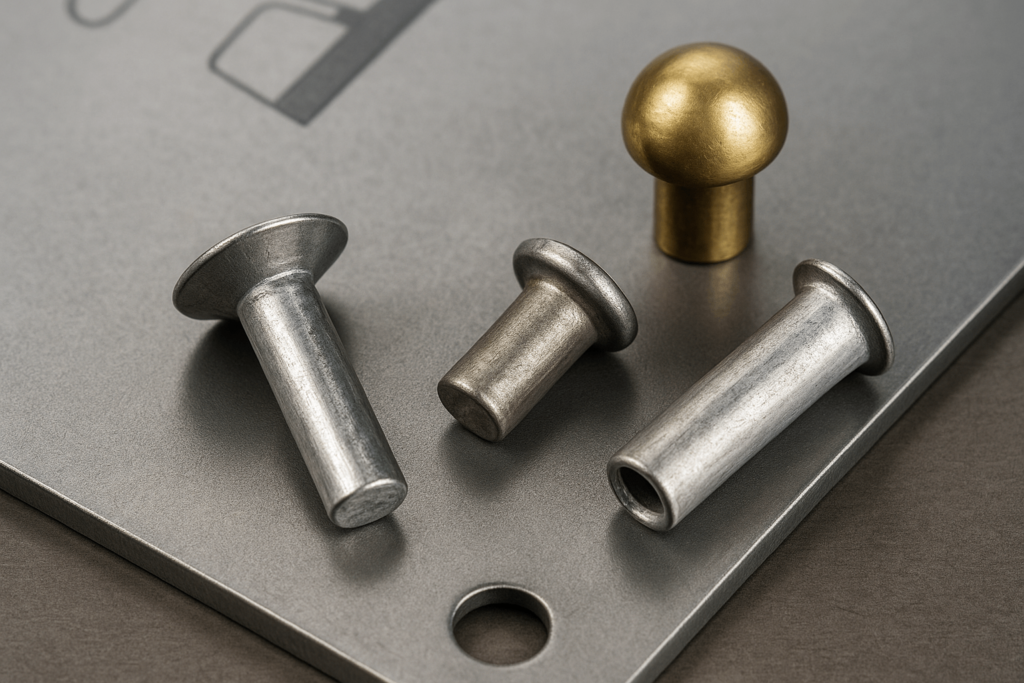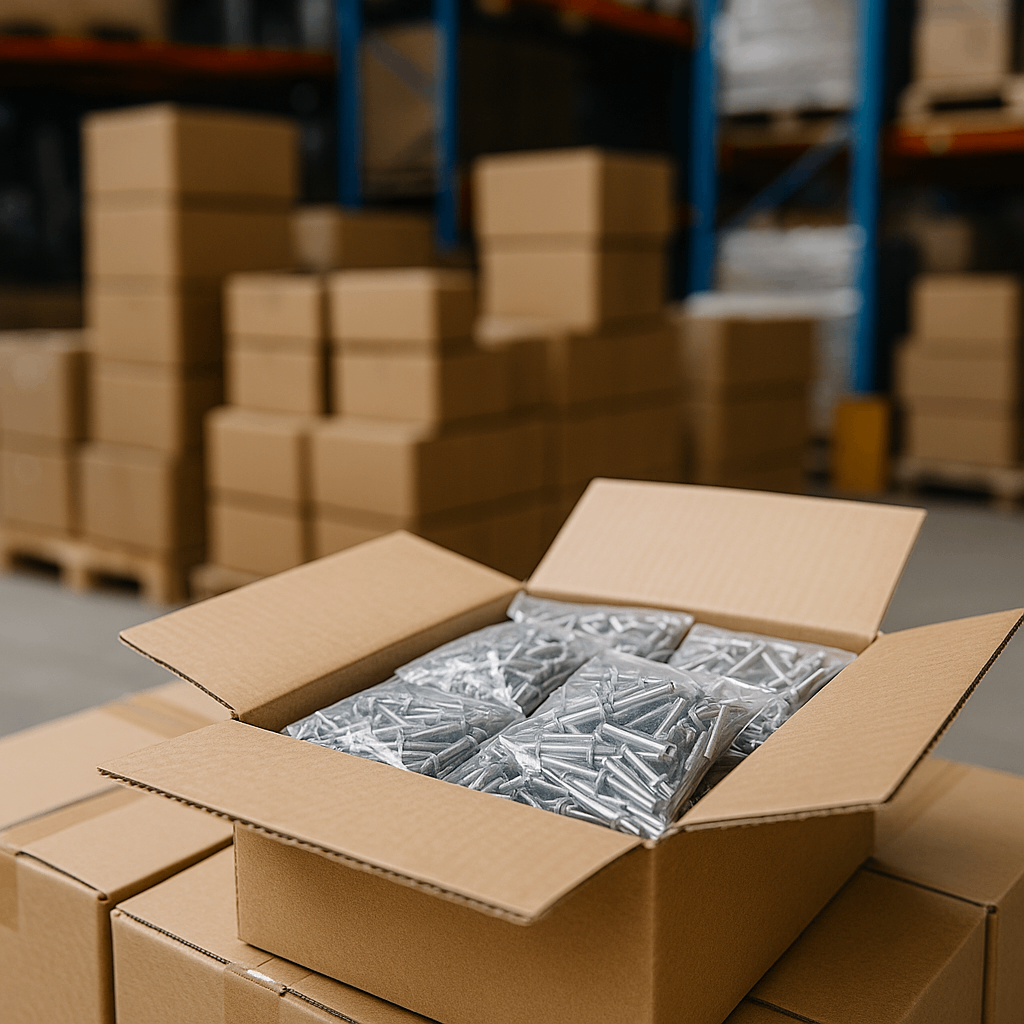Introduction: Why the Right Rivet Matters More Than You Think
For international buyers sourcing metal components in bulk, rivet selection is more than a technicality—it’s a decision that impacts total cost, delivery timelines, product returns, and end-customer satisfaction. The right rivet reduces rework, enhances batch consistency, and supports smoother scaling.
With over 26 years of fabrication experience, YISHANG helps global clients make informed choices based on real-world outcomes. As a trusted industrial rivet supplier, YISHANG combines precision, volume capability, and OEM rivet manufacturing to serve wholesale needs globally. This guide outlines not only rivet types but also critical procurement factors—application fit, coating compatibility, material standards, and tooling requirements. Whether you’re sourcing aluminum rivets for sale, planning automated riveting, or reviewing acceptance standards for riveting of solid rivets, this article is tailored to your goals.

Section 1: Procurement Strategy and Production Fit—How to Select and Assemble Rivets Right
Understand Your Load and Joint Requirements
If your assembly involves frequent vibration, dynamic load, or repeated mechanical stress, you’ll want rivets that are tested for fatigue. A rivet used in structural panels needs different properties than one used for light-duty brackets. Solid rivets outperform in high-shear environments like vehicle undercarriages or rail platforms.
In contrast, aluminium riveting with blind rivets may suffice for indoor enclosures or signage brackets. Knowing the real load direction (shear or tensile) saves time and cost on unnecessary overengineering.
One-Sided Access, Automated Workflow, and Surface Sensitivity
If your technicians can’t access both sides during assembly—common in cabinets, control boxes, and kiosk frames—your best options include blind rivets or self-piercing rivets. These options cut installation time and lower labor costs.
For products built on automatic or semi-automatic lines, blind rivets and semi-tubular styles work well with robotic feeders, especially in mid-volume runs. Parts that will be powder-coated or anodized after fastening need rivets that don’t distort during heating or compromise finish integrity. Flush rivets or post-coating aluminum options with minimal surface protrusion are ideal. YISHANG also provides custom rivet tooling to match 1/4 rivets steel formats in heavy-duty enclosures.

Preventing Failure—Material Compatibility and Compliance
Galvanic mismatch between rivet and base material is a top reason for premature failure. For example, aluminum rivets on stainless steel can trigger surface corrosion unless barrier coatings or washers are used. YISHANG regularly advises on rivet-to-substrate matching—alum rivets are often selected for aluminum housings to ensure oxidation balance.
From ISO 9001 to RoHS or REACH, we ensure all materials are certified for regulated markets. Custom documentation and batch-level traceability are available upon request. We frequently support clients sourcing bulk rivets for export to meet these standards.
Section 2: Seven Rivet Types with Real Use-Case Value

Solid Rivets – Maximum Strength, Long-Term Reliability
Solid rivets are ideal for heavy-duty use cases: chassis, structural plates, crash frames. They provide excellent fatigue resistance. At YISHANG, these are often used for battery mounting systems, rail systems, and structural panels.
They require both-side access and more tooling setup but outperform other types in long-term joint integrity. In environments where acceptance standards for riveting of solid rivets are strict, this is the go-to fastener.
Tip: Best for contracts requiring verified pull-test strength or frequent thermal cycling.
Blind Rivets – One-Side Assembly, High Throughput
Used widely in enclosures, cabinets, and kiosks, blind rivets allow one-side access and are compatible with a wide range of substrates. They’re highly efficient in automated processes.
We often use brass pop rivets or aluminum variants depending on conductivity and appearance preferences. Multi-grip blind rivets are especially helpful for overseas clients dealing with material variance. These are commonly used in rivets for electrical enclosures, providing speed and flexibility in dynamic assembly environments.
Tip: These are perfect for light-load applications where fast assembly and low tool cost are priorities.
Semi-Tubular & Full Tubular Rivets – Speed with Control
Tubular rivets are used when high-speed assembly meets lightweight function: drawer systems, interior panels, or light fixtures. Their partial or full-hollow shafts allow faster setting with less force.
These are compatible with both manual presses and automated lines, helping procurement teams reduce labor cost without compromising on hold integrity.
Procurement Note: Best for medium-volume OEMs prioritizing speed over maximum joint strength.
Flush Rivets – Form Meets Function
For clients in appliance, aerospace, or lab equipment sectors, appearance and airflow matter. Flush rivets provide seamless surface finishes with minimal protrusion.
Used heavily in applications like aluminum front plates and diagnostic equipment, flush rivets support secondary processes like coating and label application.
Added Value: Minimizes sanding or polishing time post-assembly—especially useful for painted assemblies or nameplate branding.
Self-Piercing Rivets – Dissimilar Metal, No Pre-Drill
Joining aluminum to steel? Self-piercing rivets are a fast, clean alternative to welding. They pierce the top layer and form a mechanical interlock in the bottom, no holes required.
YISHANG uses these in hybrid enclosures, automotive battery cases, and multi-layer kiosks. Their ability to handle material mismatches with minimal thermal deformation is critical in industries where aluminium riveting is preferred but conductivity matters.
Savings Example: One EV parts client reduced their fastening cycle time by 32% with self-piercing implementation.
Friction Lock Rivets – Designed for Motion
For sectors like rail, HVAC, and urban transport, durability under vibration is non-negotiable. Friction-lock rivets stay put even under cyclic stress. We support friction-lock options that comply with transit industry requirements.
OEM Advantage: Prevents post-sale service calls due to rivet migration or loosening—common in moving equipment.
Split Rivets – Specialty Fastening for Mixed Materials
Split rivets aren’t load-bearing fasteners. But they shine in displays, signage, and furniture parts where combining plastic, wood, and thin metal is common.
In lightweight POS systems or hybrid panels, we’ve helped buyers integrate split rivets to eliminate adhesives. Custom die heads help ensure they don’t crack the substrate.
Buyer Tip: Use with reinforced backing plates if used on fragile materials.
Section 3: Buyer-Focused Comparison Chart

If you’re comparing rivet types for bulk production or automated sheet metal fastening lines, the chart below helps match technical features with real-world factory constraints.
| Rivet Type | Joint Strength | One-Side Access | Auto-Compatible | Surface Finish Safe | Recommended For |
|---|---|---|---|---|---|
| Solid | Very High | No | Low | No | Structural panels, transit parts |
| Blind | Medium | Yes | Yes | Conditional | Vending, kiosks, light enclosures |
| Semi-Tubular | Low-Med | No | High | Yes | Furniture, brackets, housings |
| Flush | Medium | No | Mid | Yes | Appliances, control panels |
| SPR | High | Yes | High | Yes | EV, aluminum-steel assemblies |
| Friction Lock | High | No | Low | Conditional | HVAC, rail systems |
| Split | Low | Yes | Low | Yes | Signage, hybrid materials |
Section 4: Avoidable Errors in Procurement
❌ Mistake: Buying based on headline price.
Low-grade rivets may save upfront but trigger costly failures and warranty issues.
❌ Mistake: Ignoring compliance.
Non-certified rivets can be blocked at customs in EU or North America. Always confirm ISO 9001, RoHS, or REACH compliance for every batch.
✅ Pro Tip: Request certificates for each material batch and clarify aluminum or steel alloy grade—especially for critical joints.
Section 5: Quick Answers to What Buyers Ask
Can blind rivets be used post-coating?
Yes, if flange depth is minimized and hole diameter is controlled.
Do you offer aluminum rivets for sale with certifications?
Yes. All batches from YISHANG include inspection reports and alloy traceability.
Which rivet type is best for mixed-materials?
Self-piercing or split rivets depending on load requirements.
How do I specify a rivet?
State type, diameter (e.g. 1/4 rivets steel), grip range, head style, and coating preference.
Conclusion: A Smarter Approach to Rivet Sourcing
When it comes to industrial metal fastening, one size does not fit all. The right rivet streamlines assembly, aligns with your surface finish, and reduces post-sale issues. Whether you’re sourcing aluminium riveting solutions or configuring high-volume automation, every decision compounds over time.
From stainless steel rivets for structural use to custom rivet tooling for high-speed production, YISHANG stands as a reliable partner for B2B sheet metal fastening success.


